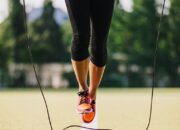Exercise in general offers numerous health benefits, including maintaining the health of the nose and respiratory system. Regular physical activity helps keep the nasal passages clean, improves airflow, and strengthens the immune system to fight off allergies and infections. Here are some types of exercises that can contribute to a healthy nose:
### 1. **Jogging and Running**
Jogging and running are aerobic exercises that increase lung capacity and improve airflow through the nose and respiratory passages. Regular running makes the body more efficient in filtering and clearing the air that enters the nose.
### 2. **Yoga**
Yoga combines breathing exercises (*pranayama*) and body postures (*asanas*). Breathing techniques in yoga, such as *nadi shodhana* (alternate nostril breathing), help clear the nasal passages and improve respiratory function. Yoga also reduces stress, which can exacerbate conditions like allergies and sinusitis.
### 3. **Swimming**
Swimming is an effective exercise for increasing lung capacity and training breathing. Consistent movement in the water can help open the airways and the nasal passages, improving sinus function. However, people sensitive to chlorine should be cautious, as chlorine in pools may irritate the nose.
### 4. **Cycling**
Cycling is a great way to exercise the respiratory system and improve airflow in the lungs and nose. This exercise also boosts endurance and strengthens respiratory muscles, making the nose more resilient to allergens or irritants.
### 5. **High-Intensity Interval Training (HIIT)**
HIIT involves short bursts of intense cardio followed by periods of rest. HIIT increases rapid, deep breathing, helping to open the nasal passages, improve airflow, and increase lung capacity. It also strengthens the immune system, which is vital for fighting respiratory infections.
### 6. **Tai Chi**
Tai Chi focuses on slow, deliberate movements and deep breathing. The breathing exercises in Tai Chi can help increase lung capacity and clear the respiratory passages, including the nose. It also has a calming effect, which can help alleviate nasal allergy symptoms triggered by stress.
### 7. **Stretching and Breathing Exercises**
Simple body stretches and deep breathing exercises can help clear the nasal passages, improve airflow, and prevent nasal congestion. Breathing exercises can be done anytime, including during breaks at work or before bed.
### Benefits of Exercise for Nose Health
– **Improved Airflow**: Exercise boosts blood flow and air circulation in the nose, helping to clear mucus and trapped dust or foreign particles.
– **Strengthened Immune System**: Physical activity enhances the immune system’s ability to fight infections, such as colds or flu, which often cause nasal congestion.
– **Reduced Inflammation**: Regular exercise helps reduce inflammation throughout the body, including in the nasal and sinus passages, which is crucial for people with allergies or sinusitis.
– **Allergy Management**: Exercise, especially that involving regular deep breathing, helps reduce sensitivity to allergens and improves conditions like allergic rhinitis.
Regular exercise, especially those that involve breathing exercises, is highly beneficial for the health of the nose and respiratory system. By maintaining a consistent exercise routine, the nose can function more effectively in filtering air, reducing the risk of infections, and enhancing overall comfort in breathing each day.
















